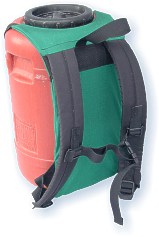Deciding which size of kayak paddle is right for you should be an easy task. But, the more you read on the subject, the more confusing it gets, thanks to unspoken biases, old wives tales and kayak voodoo rituals. Using math, physics and the best teacher of all, experience, I’ve found the following system works!
First, have a friend measure your torso length as follows. Sit on the floor with your legs in front of you like in a kayak and with a book precariously balanced on your head. If you have served in the military, then you can sit ramrod straight. Everyone else, sit with your usual amount of kayaking slouch. Measure from the floor to the underside of the book, in inches.
Next, you have to decide which style of paddling you enjoy most often; “all day touring”, “fitness/racing” or “adventure racing.”
If you typically paddle at an easy pace that you could do all day, or if you are in a kayak to “be” rather than to “do,” then you are what I call an “all day tourer.” During your stroke, the shaft will stay fairly horizontal and your fists will draw small circles in the air. Use “The Chart” to determine your paddle length. Then, if you paddle a kayak wider than 24″, add 5cm. You should use a long and thin “quill-style” blade.
If you race or paddle for fitness or can’t let go of your “type A personality” when you’re on the water, then you are what I call “fitness/racing paddler.” During your stroke, the shaft will be more vertical and your fists will draw larger circles in the air. Use “The Chart” to determine your paddle length, but subtract 10cm. You should choose a blade shape that is a little shorter and wider than a “quill.”
If you are not having fun unless your vision is blurred by sweat and you are bleeding from at least one orifice, then you are what everyone calls an adventure racer. Use “The Chart” to determine your paddle length, subtract 20cm, get a wing blade and cut back on the coffee!
Given all the scientific resources and years of study I sacrificed to develop “The Chart,” you still have to listen to your own body – it knows! According to “The Chart” my beloved should use a 235cm paddle, but prefers a 240cm. “It just feels better,” she says. Who am I to argue?
| The Chart | |||||||||||
|---|---|---|---|---|---|---|---|---|---|---|---|
| Torso Length (inches) | 30 | 31 | 32 | 33 | 34 | 35 | 36 | 37 | 38 | 39 | 40 |
| Paddle Length (cm) | 215 | 220 | 220 | 225 | 225 | 230 | 235 | 240 | 240 | 245 | 25 |


